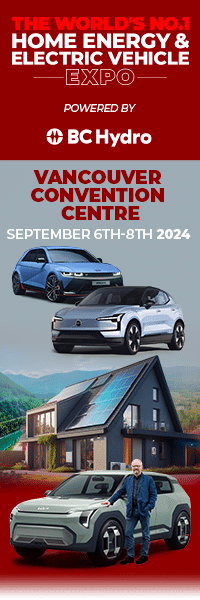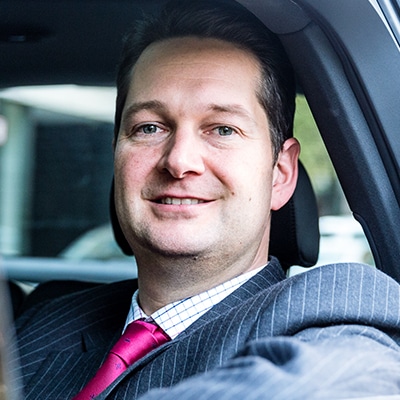
As Chief Strategist of a mobility startup, my role is to stay ahead of the curve, think beyond what’s currently happening, and envision the impact of certain trends on our industry. Like so many others in this book, I have been waxing lyrical about the virtues and impact of electric vehicles for a very long time – often in endless debates. We’ve reached the point now, however, that there is little left to contest about electric vehicles. It’s time to focus on the next frontier.
The ship has sailed. All new cars will be electrified by 2025 (a bold, almost ridiculous assessment when I wrote it in my first book in 2014, now perhaps too modest in its reach). Full electrification – including other vehicle classes – will follow shortly thereafter. Limiting factors are not the usual excuses (range, infrastructure, and price), but simply having enough supply to meet the pent-up demand. Anyone unprepared is due for a rude awakening, at best.
The Awakening
What does it take for an awakening? Tens of Billions in fines, Millions of idled vehicles, and a tainted reputation may have worked for Volkswagen. €50 Billion of investment through 2023 – just into electrification – is a good start into a new future for the world’s largest automaker.
On the other hand, a Board Member of a certain Bavarian automaker – who himself rose through the ranks developing internal-combustion engines – suggested in 2018 that 75% of its cars will continue to have fossil-fuel-burning engines until well past 2025. Another South German automaker in 2018 proudly launched a new, €500 Million diesel and petrol engine plant, ironically just weeks before issuing a profit warning because of “government proceedings into diesel”. The respective lobbying bodies for the German and UK auto industries continue to utter non-sensical drivel about “clean diesel”, praising the marginal improvements in CO2 emissions made over the last 20 years. Their only recourse, and intent, is on prolonging the inevitable.
It’s time for an awakening, yet most American and some other traditional European automakers continue to act as though they alone determine the speed-of-play in the mobility revolution. A naïve assumption, at best, at a time when their “real” competition – new entrants into the broader mobility space – could buy these automakers with their cash-reserves – that is, if they wanted deal to with the poison-pill of legacy investments, which seems unlikely.
Automotive history is littered with once-significant brands that lost their way by failing to adapt to trends – Pontiac, Plymouth, Saturn, Hummer (and these are just from the General Motors portfolio). Beyond individual marques, entire brand-families have failed as well (AMC, Rover Group) in the “normal” course of business, but due to “minor” shocks like an oil or financial crisis.
But this shock is different and more substantial; it goes well beyond just switching to electric vehicles. Zero Emissions, Zero Accidents, and Zero Ownership is the mobility trifecta that will lead half of current automakers toward consolidation (once called “mergers of equals”), carve-outs, or bankruptcy by the early part of the 2020s.
| “To know your enemy, you must become your enemy.”
– Sun Tzu |
Turning a tanker around in an ocean of competitive icebergs is risky, but the alternative is worse. Hence, there will be unusual alliances of development and production capacity. By the end of this decade, manufacturers will seek to sustain themselves, their margins, and their employees through ever-more desperate measures. Idle manufacturing plants in the US and Europe will be sold or kept afloat with contract-building for the frenemies from Silicon Valley and, perhaps, China.
The automobile industry is dead. Long live the mobility ecosystem.
In truth, the car business was never really that sexy anyway (to many investors). Compared to tech or telecommunication, it’s smaller by revenues, has lower growth rates, and much smaller EBIT margins.
But such comparisons are fairly arbitrary. First, it matters which businesses you include in the industry. What we know as the rental car, dealer, parking, and filling station businesses are direct results of the automobile, but each could rent, deal, park, and fill other objects as well. Second, the definition of the industry itself is fluid. After all, where does one put BP (who now runs charging stations), Uber (who is still developing vehicle technology within the automotive space), or even Tesla (who sees itself as a lot of things, but not a car company)? Third, and most importantly, the new “mobility” ecosystem is much greater than things linked directly to cars.
Turning from building conventional cars into an electric, autonomous car industry is a big step, but it’s akin to putting lipstick on a pig; it’s still a car. The core issue is the business model itself. Assuming the remaining automakers won’t stray too far from their core competencies (as long as these competencies aren’t in cylinders and pistons), they need to redefine what business they are in. Most already call themselves “mobility companies”, but even this requires more explanation. Mobility isn’t so much an industry as it is an ecosystem that includes tech, energy, transportation, travel, infrastructure, entertainment, and perhaps even public health. In half-recognition of this, one French automaker has purchased a magazine business, convinced people will read more in autonomous vehicles. An American automaker has begun a retail platform, in order to skim revenues from the shopping done in the back of their future robotaxis. Yet others are building aggregation platforms for autonomous ridehailing – no doubt to compete with Citymapper and Google. As always, it’s build, buy, or partner – because doing it all alone will be impossible.
Romeo and the Rhinoceros
Given the urgent need to add new competencies, business lines, and scale, there is now already collaboration between BMW and Daimler, VW and Ford, GM and Honda. Many of these would have been unheard of ten years ago. How long until any of these strange bedfellows turn into “marriages of convenience”? Only the family legacies behind the carmakers know for sure. But getting the Capulets and the Montagues of the automobile industry to get together will seem easy when compared to the inter-species (inter-industry) mating dance we will see over the next few years.
This new, mobility ecosystem means that companies from disparate industries must join together create more comprehensive solutions for end-customers. Consider:
- Selling an end-consumer an electric car requires providing them charging solutions. It may also require selling them energy generation, storage and provision. No wonder BMW, Daimler, Tesla and others are in the energy storage business, several others have bought lithium mines, and most are building battery plants.
- Selling an end-consumer a mobility mileage subscription requires providing them comprehensive solutions around tech, mapping, public transport, ridehailing and -sharing.
- Selling an end-consumer on a new lifestyle that incorporates zero-emissions Smart Mobility solutions requires close contact with local governments, developers, architects, and planners.
Many of these touchpoints will be brand-new to the automobile industry. They require conversations very different than anything the average automobile executive will be familiar with – like speaking with a new species of individual, in a language they don’t understand. Even the new, electric car companies may find themselves struggling to learn the language of road-diets, densification, and revenue per square meter (instead of per horsepower).
This will be one of the biggest advantages that tech and network executives have over their car-stamping subsidiaries: data from a wider swath of industries.
Just getting started…
While I’m done with electric vehicles, we as an ecosystem of researchers, authors, advisors and creators are just getting started on the bigger picture – the transformation of our cities, our communities, and our lives. Simplicity and quality of life will win the day. What a joy to wake up to.





